The first object in the Museum of Liverpool
The Liverpool Overhead Railway carriage was the first object installed in the Museum of Liverpool on 28 July 2010, as it is so large the gallery had to be built around it!
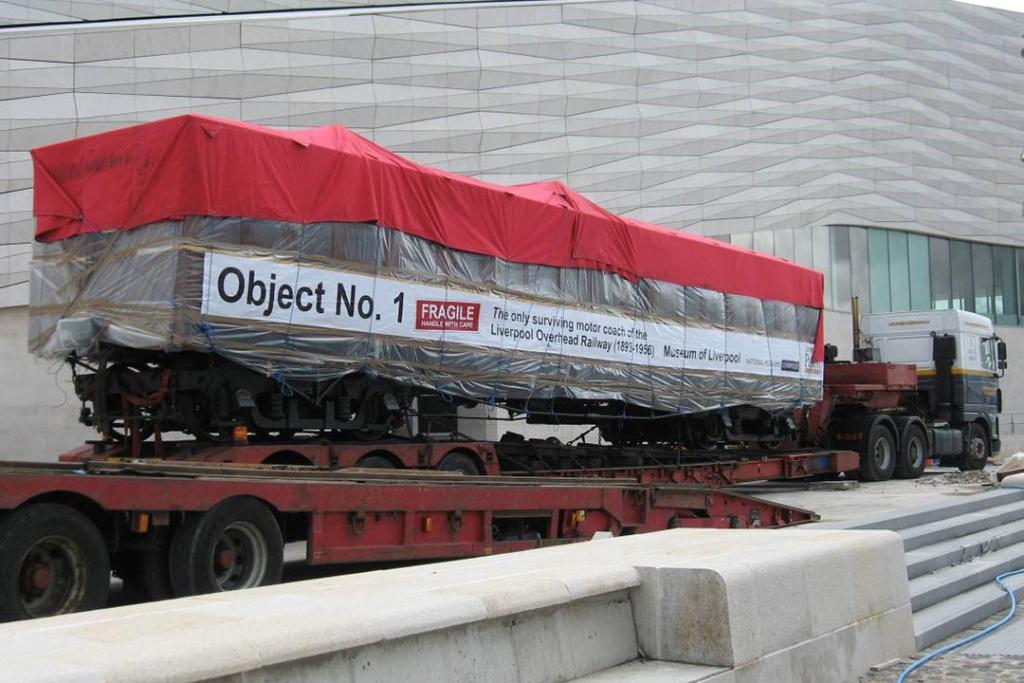
On 28 July 2010, a year before the Museum of Liverpool opened, the very first object was installed. The Liverpool Overhead Railway Motorcoach No. 3 had to be put in position before the building was completed because of its size. Once in position walls could go up and the gallery could be completed around it.
Liverpool's pioneering Overhead Railway
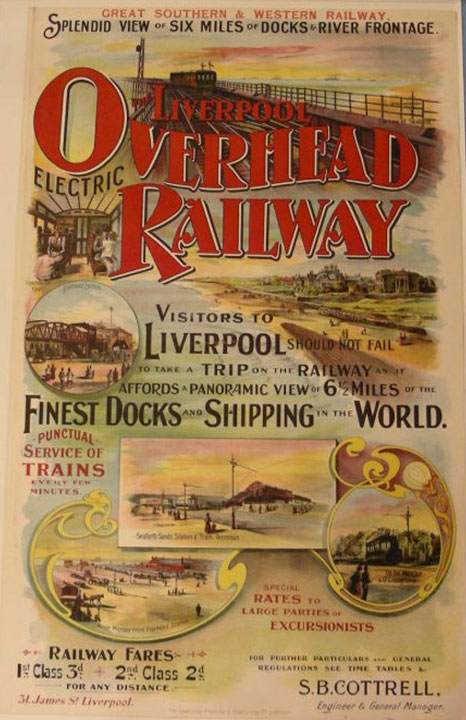
The Liverpool Overhead Railway opened in 1893. It was a pioneering piece of railway building that, even though it closed more than 65 years ago, is still remembered with great affection by the people of Liverpool.
In the mid-1800s thousands of workers travelled along the docks every day in pursuit of work and traffic became congested as trade boomed. Several suggestions were considered over the years and in 1878 The Mersey Docks and Harbour Board considered building either an elevated or underground railway. The overhead version was thought the most feasible and in 1882 permission was gained for a double track railway with an estimated cost of £585,000.
The Liverpool Overhead Railway Company was formed in 1888 to build and maintain the railway and work started in October 1889. The line was constructed in mid-air using a custom-designed jig that moved along the route as the track was assembled and although it was a complex task it was completed with minimum interference to traffic along the route. The railway opened in 1893 and soon became a firm favourite in the city for journeys to work and weekend trips to Seaforth Sands. You can see photographs of the Overhead Railway in our online collections.
Motorcoach No. 3
The Liverpool Overhead Railway motorcoach in the museum’s collection was one of the first batch of coaches built by Brown, Marshall and Company of Saltley, Birmingham and served until the railway closed in 1956. It is the only example of a motor coach to survive.
The coach weighs about 20 tons and is 5 metres long. To get this into position in the Museum of Liverpool, and at the correct height of 16 feet (4.8m) took many months of planning by our Shipkeeping and Engineering Conservation team. The operation was undertaken in conjunction with the police and heavy haulage and steelwork contractors. The police were required as the transport vehicle for the coach was more than 25 metres long which meant it was an oversize load.
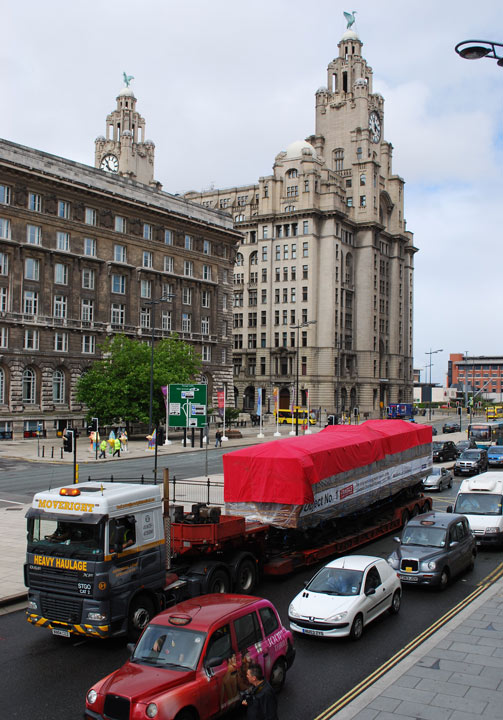
A complex operation
To prepare for the move the coach was jacked up and skates were placed at load bearing points at either end of the coach. Using a temporary rail panel it was loaded onto the fixed rails on the transport trailer by a 50 ton winch. The fragility of the coach, especially the glass panels, meant all movements had to be undertaken in a controlled manner using wire rope winches.
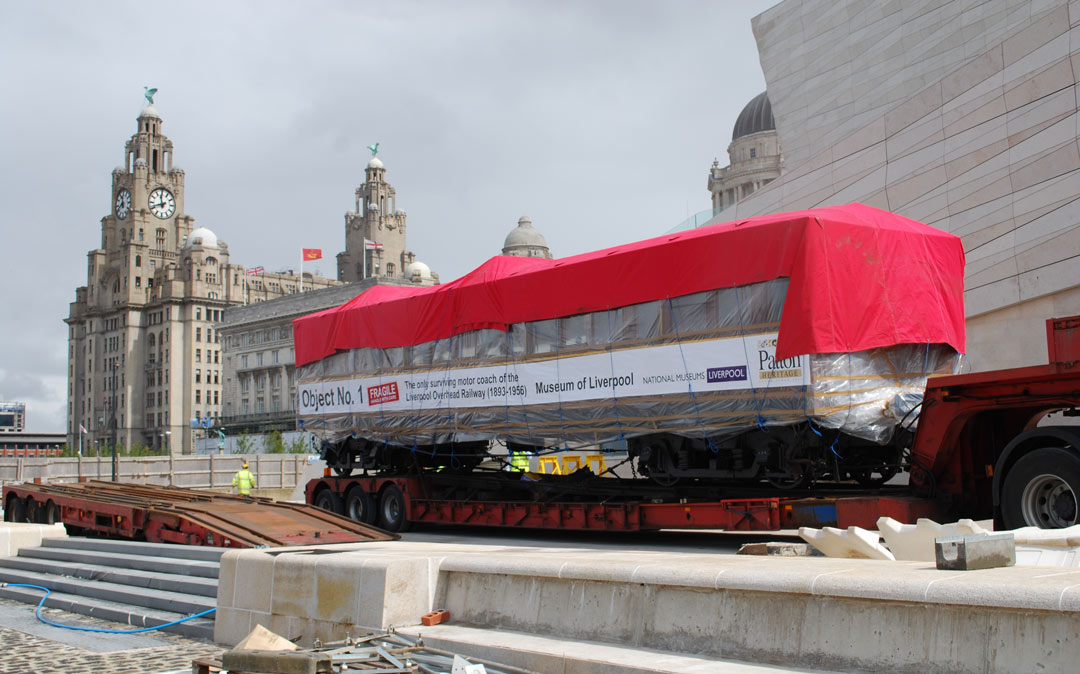
On arrival at the museum site reversing into the loading bay proved tricky with the tight angles along the waterfront access road. Once in position the vehicle mounted winch was used again to control the coach’s transition onto the awaiting steel frame. Skates were then fitted under the frame to move it into the Great Port gallery.
Once the coach was in position the lifting equipment was assembled. This operation required the use of four synchronized hydraulic jacks to raise the total load (coach and frame) high enough to allow steel stools to be placed under the framework. As the coach was raised multiple combinations of taller stools were put in position to enable the lift to progress in controlled stages.
A complex fixing operation was then undertaken to secure the coach in position ready for the replicated Liverpool Overhead Railway structure to be built underneath it.
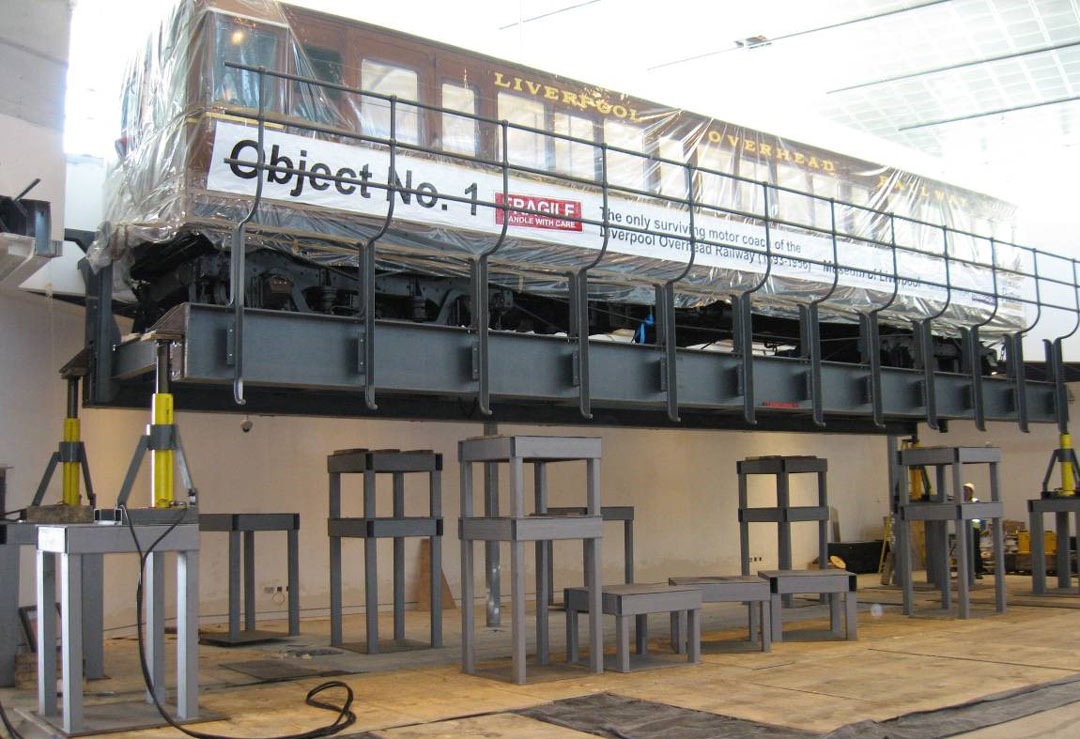
The star of the Liverpool Overhead Railway gallery
For the move the motorcoach was wrapped in a banner declaring it Museum of Liverpool Object No.1 and it was symbolic of the museum coming towards fruition after so many years of planning and development. The history of the Overhead Railway was always going to be a big part of the museum as we knew how much it meant to people. We spent several years developing the gallery content and interviewing those who remembered travelling or working on the railway. The motorcoach was the linchpin of this story and made for a stunning centrepiece in the gallery when the museum opened the following year, in 2011.
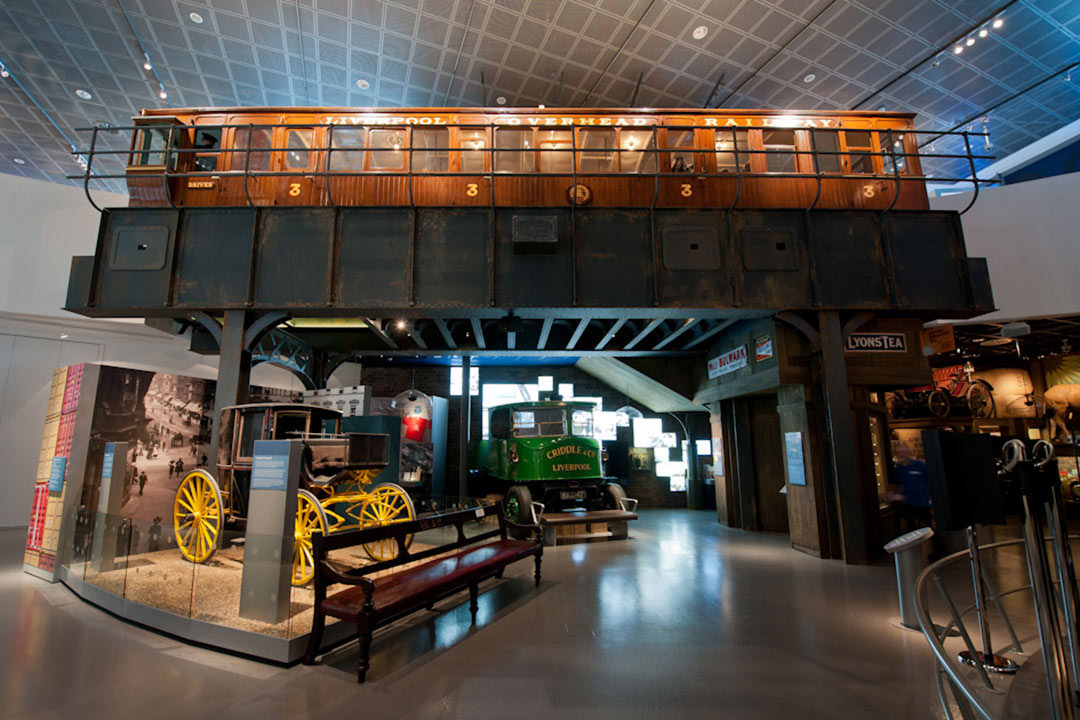
The Liverpool Overhead Railway gallery is such a popular part of the museum and our school workshops about the history of transport are much sought after and lots of fun.
Since opening day the gallery has inspired poetry, the donation of new and fascinating objects (some of which you can now see on display) and the sharing of memories, all of which have enhanced our knowledge of this innovative and much-loved railway.
With stories from our Liverpool Overhead Railway travellers to listen to, alongside treasures such as the restored Dingle Station signal and beautiful advertising posters from the railway, we hope the gallery brings this pioneering engineering feat to life for all our visitors.
